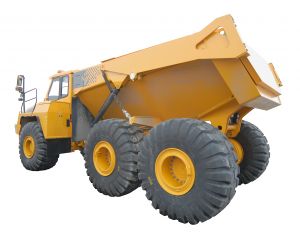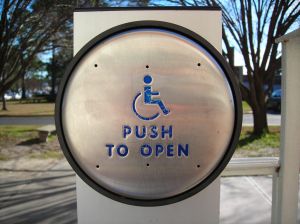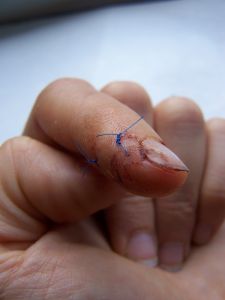City of Danville v. Tate, a workers’ compensation case from the Supreme Court of Virginia, involved claimant who was employed by the city as a firefighter for 39 years. In March of 2009, claimant suffered a major heart attack and did not return to work. He retired six months after his heart attack.
 Prior to becoming ill, claimant had accrued around 6,000 hours of paid sick leave. His employer paid out his sick leave prior to retirement in the amount of approximately $40,000. This sick leave payout was roughly equivalent to his annual salary. He used the balance of his sick leave, as permitted, to earn another year of employment credit with respect to his retirement plan.
Prior to becoming ill, claimant had accrued around 6,000 hours of paid sick leave. His employer paid out his sick leave prior to retirement in the amount of approximately $40,000. This sick leave payout was roughly equivalent to his annual salary. He used the balance of his sick leave, as permitted, to earn another year of employment credit with respect to his retirement plan.
However, before he retired, he filed a workers’ compensation claim seeking a rating of two-thirds impairment from the heart attack-related disability. The city first denied his claim, but it accepted liability the following year. He was paid for his six months of disability prior to retirement. The city did not ask to be given an offset credit with respect to money it had already paid out in sick leave.
Continue reading
 Massachusetts Workers Compensation Lawyers Blog
Massachusetts Workers Compensation Lawyers Blog




 In 2003, claimant returned to the school system, and his second day back on the job, two students he refused to let into the classroom due their disruptive behavior assaulted him. His specific claim was that one student injured his shoulder when he pushed claimant into the doorframe to get past him. He also alleged one student continued to the threaten him and told claimant “[he] was going to put a put a cap in his ass.” The other students repeatedly mocked claimant for the remainder of the day, making teaching virtually impossible. Claimant never returned to teach at the school.
In 2003, claimant returned to the school system, and his second day back on the job, two students he refused to let into the classroom due their disruptive behavior assaulted him. His specific claim was that one student injured his shoulder when he pushed claimant into the doorframe to get past him. He also alleged one student continued to the threaten him and told claimant “[he] was going to put a put a cap in his ass.” The other students repeatedly mocked claimant for the remainder of the day, making teaching virtually impossible. Claimant never returned to teach at the school. While driving, claimant was struck from behind by a shovel bucket of another huge piece of mining equipment. According to court records, the shovel bucket was large enough to hold an automobile. It hit the rack of the dump truck located behind the operator’s cab. Claimant testified the force from the impact caused his entire body to go numb and to nearly knock him unconscious. He was not sure where he was or what he was doing following the collision and was taken to the emergency room.
While driving, claimant was struck from behind by a shovel bucket of another huge piece of mining equipment. According to court records, the shovel bucket was large enough to hold an automobile. It hit the rack of the dump truck located behind the operator’s cab. Claimant testified the force from the impact caused his entire body to go numb and to nearly knock him unconscious. He was not sure where he was or what he was doing following the collision and was taken to the emergency room. Employer’s insurance company was unable to find a center he could afford on the less than $400 he was receiving in workers’ compensation benefits they were paying him. He was also unable to seek federal disability assistance under the Social Security Administration (SSA) due to his status as an undocumented worker from Mexico. Even without an assisted living facility, he was in need of wheelchair accessible housing, with appropriate accommodations, and access to public transportation. Employer’s insurance company case manager tried to assist him with finding suitable housing but was again unable to help him.
Employer’s insurance company was unable to find a center he could afford on the less than $400 he was receiving in workers’ compensation benefits they were paying him. He was also unable to seek federal disability assistance under the Social Security Administration (SSA) due to his status as an undocumented worker from Mexico. Even without an assisted living facility, he was in need of wheelchair accessible housing, with appropriate accommodations, and access to public transportation. Employer’s insurance company case manager tried to assist him with finding suitable housing but was again unable to help him. The state workers’ compensation bureau awarded claimant benefits for the amputation of his four fingers after the accident, allowed a further claim for a one-third disability in his index finger in 1985, and another claim in 1990 for two-thirds loss of his other three fingers.
The state workers’ compensation bureau awarded claimant benefits for the amputation of his four fingers after the accident, allowed a further claim for a one-third disability in his index finger in 1985, and another claim in 1990 for two-thirds loss of his other three fingers. A recent news article from the
A recent news article from the  There was a workplace accident involving the hay wagon, and claimant was seriously injured and is now a paraplegic. His spine was crushed by the wagon. Claimant filed a civil lawsuit in state court against farmer and his daughter. Claimant also filed a lawsuit the same day with farmer and his daughter against farmer’s insurance company in which they sought a declaratory judgment claimant was covered by farmer’s General Commercial Liability insurance plan. Insurance company also sought a declaratory judgment finding claimant was not covered by the insurance policy.
There was a workplace accident involving the hay wagon, and claimant was seriously injured and is now a paraplegic. His spine was crushed by the wagon. Claimant filed a civil lawsuit in state court against farmer and his daughter. Claimant also filed a lawsuit the same day with farmer and his daughter against farmer’s insurance company in which they sought a declaratory judgment claimant was covered by farmer’s General Commercial Liability insurance plan. Insurance company also sought a declaratory judgment finding claimant was not covered by the insurance policy. In this accident, his employer was self-insured, accepted liability for workers’ compensation, and paid for all medical bills related to his rotator cuff surgery and lost wages associated with his disability rating.
In this accident, his employer was self-insured, accepted liability for workers’ compensation, and paid for all medical bills related to his rotator cuff surgery and lost wages associated with his disability rating. Her husband drove her to the hospital that day, and doctors diagnosed her with fractures in one of her fingers and the fifth metacarpal of her left hand. Intake records show she was able to walk, her main complaint was pain in her hand, and she denied any other injuries from the fall.
Her husband drove her to the hospital that day, and doctors diagnosed her with fractures in one of her fingers and the fifth metacarpal of her left hand. Intake records show she was able to walk, her main complaint was pain in her hand, and she denied any other injuries from the fall.